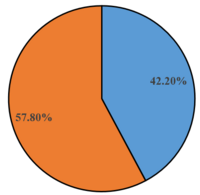1989 Separation Referendum
The 1989 Referendum polled the public’s opinion about potential separation and saw 15% more support than the Referendum in 1979.
Political Developments Leading up to 1989
An increased momentum for separation in the decade since in 1979 was a result of [[Terraferma|Terraferma’s (the mainland of Venice) feeling of being controlled by the government of Venice [1]. An economic factor, mainly the industrialization of Terraferma, drove in increase in support for another referendum.
Results and Outcomes

The 15% increase did not change the outcome of the separation referendum. However, both the Terraferma and Estuario breakdowns of vote increase were 15%, and therefore a proportional shared interest.Overall, there were 42% of people voting “yes” for a separation and 58% of people voting “no.” In addition, this referendum started a greater push for governmental authority in Venice in the form of increased movements and more frequent referendums. A study done in 1990, influenced by the outcome of the 1989 referendum, researched and proposed three different models concerning the restructure of the Venice-Mestre Municipality. It also helped movements gain footing which culminated in another referendum in 1994.
See Also
References
- ↑ Muscarà, C. (1990). Three models for the future of Venice: A case study of territorial polarization in a growing area of an urban periphery. Ekistics, 57(340/341), 22-34.